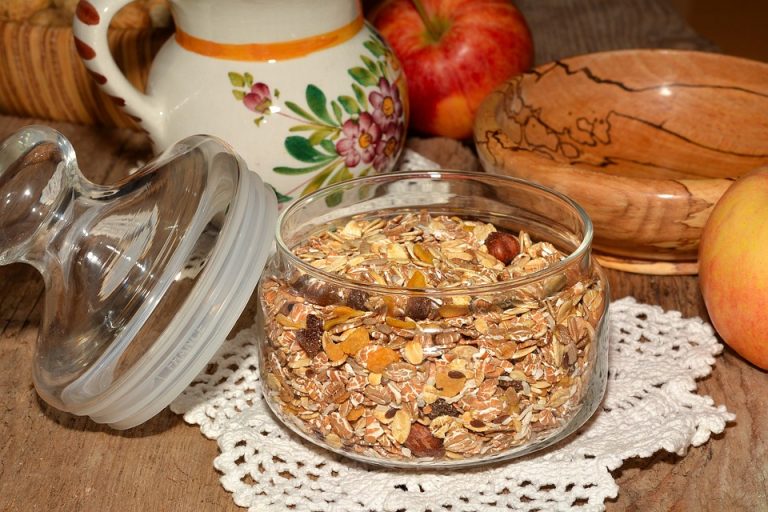Contents
- 7 Ways To Start A Blood Sugar Detox Plan
- Why A Blood Sugar Detox Plan Works
- How To Prepare Mentally And Practically
- Way 1: Build A Blood Sugar Detox Plan Around Whole Foods
- Way 2: Time Your Meals To Keep Insulin Stable
- Way 3: Prioritize Protein And Fiber At Every Meal
- Way 4: Cut Back On Added Sugars And Refined Grains
- Way 5: Move Your Body Strategically
- Way 6: Manage Stress And Sleep For Better Results
- Way 7: Use Testing And Professional Support Wisely
- Sample 7-Day Kickstart You Can Repeat
- Common Pitfalls And How To Avoid Them
- Real People, Real Wins
- How Long Before You Feel Better?
- Tools To Make It Easier
- When To Call Your Doctor
- Bottom Line
- FAQ
7 Ways To Start A Blood Sugar Detox Plan
Blood sugar detox plan is a simple, practical reset for your body that focuses on lowering insulin spikes, reducing inflammation, and bringing back steady energy. It matters because your appetite, mood, and long-term health hinge on those rhythms. If you feel tired after meals, crave sweets, or worry about your numbers, this is for you.
I wrote this like I’m talking to a friend who’s had enough of the crash-and-binge cycle. You’ll get science-backed steps, real-life tactics, and the kind of no-nonsense encouragement that actually moves you forward. Expect clarity, not fluff.
Why A Blood Sugar Detox Plan Works
A blood sugar detox plan targets what frustrates most people: unpredictable energy, stubborn cravings, and the slow wear-and-tear of high blood glucose. Studies show that reducing refined carbs and adding fiber and protein can dramatically affect insulin sensitivity and metabolic health. Read more at Harvard Health for an accessible summary of how diet affects blood sugar.
When you stabilize glucose, you think clearer. You sleep better. You lose the “hangry” mood swings. This isn’t about deprivation. It’s about learning what your body thrives on and building a sustainable routine.
How To Prepare Mentally And Practically
Start with a short inventory: what do you eat when you’re stressed? What are your trigger times? Knowing this gives you leverage.
Clear out obvious temptations. Make a shopping list that feels like permission instead of punishment. Tell someone you’re trying this—accountability matters. A little planning keeps the detox from becoming a throwaway promise.
Way 1: Build A Blood Sugar Detox Plan Around Whole Foods
Swap packaged snacks for whole-food options. Vegetables, nuts, lean protein, and whole grains slow digestion and blunt spikes. Whole foods deliver fiber and nutrients without the sugar bombs found in many “healthy” bars.
Small, realistic swaps matter more than grand gestures. Trade soda for sparkling water with a squeeze of lemon. Keep sliced veggies and hummus in the fridge. These shifts add up fast.
Way 2: Time Your Meals To Keep Insulin Stable
Eating on a predictable schedule helps your body expect fuel and respond better. Aim for balanced meals every 4–5 hours and avoid long grazing sessions that drive glucose volatility.
Intermittent fasting can help some people reset, but it’s not mandatory. If you try time-restricted eating, ease in slowly and watch your sleep and mood. Not every strategy fits every life.
Way 3: Prioritize Protein And Fiber At Every Meal
Protein and fiber slow the absorption of carbohydrates. That means steadier blood sugar and fewer cravings. Think eggs, salmon, lentils, chia, and leafy greens.
If you’re used to cereal for breakfast, add a scoop of Greek yogurt or a handful of nuts. Tiny additions have a big effect on how you feel by lunch.
Way 4: Cut Back On Added Sugars And Refined Grains
This is where most of the wins happen. Sugary beverages, pastries, and white bread cause rapid glucose spikes and insulin surges. Replacing them with whole grains and water reduces those roller-coaster rides.
Be clever: swap dessert for fruit plus a bit of dark chocolate. You still indulge, but in a way that keeps your system calm and cooperative.
Way 5: Move Your Body Strategically
Exercise helps muscles use glucose and improves insulin sensitivity. A brisk 20–30 minute walk after meals lowers post-meal spikes. Strength training builds lean mass that consumes glucose even at rest.
You don’t need to be a gym rat. Short, consistent activity beats sporadic heroic workouts every time. Aim for what you can repeat.
Way 6: Manage Stress And Sleep For Better Results
Stress raises blood sugar through cortisol. Sleep debt also derails insulin sensitivity. So if you’re detoxing your diet but burning the candle at both ends, progress will stall.
Practical tools work: deep breaths, a 10-minute wind-down routine, and consistent sleep times. When sleep and stress are handled, dietary shifts become far more powerful.
Way 7: Use Testing And Professional Support Wisely
Track your progress with home glucose monitoring or periodic A1c checks if recommended by your clinician. Data demystifies progress and guides tweaks.
A registered dietitian or certified diabetes educator can personalize the plan. If you’re on medication, consult your provider before making major changes to avoid low blood sugar complications. Reliable information is available from the American Diabetes Association for practical guidance.
Sample 7-Day Kickstart You Can Repeat
- Day 1–2: Clean the pantry and stabilize meals with protein, fiber, and healthy fats.
- Day 3–4: Add 20-minute post-meal walks and focus on sleep.
- Day 5–7: Fine-tune portion sizes and introduce resistance moves twice this week.
This rhythm is gentle and repeatable. It’s not a one-time stunt. It’s a lifestyle sprint you can sustain.
Common Pitfalls And How To Avoid Them
Feeling deprived is the biggest trap. The antidote: plan satisfying meals and keep favorite treats in small, controlled portions. Expect cravings the first 7–10 days—your brain is relearning what normal tastes like.
Another trap is all-or-nothing thinking. Slip-ups are not proof of failure. They’re information. Learn what triggered the slip and build a workaround.
Real People, Real Wins
A woman I know swapped her afternoon muffin for a salad with chicken. Her energy at 3 pm went from zombie to engaged within a week. Another client combined short walks with evening protein and saw steady fasting glucose improvements in a month. These are the kinds of practical wins that keep people going.
Clinical trials show similar patterns: small, consistent changes produce measurable benefits in insulin sensitivity and metabolic markers. The evidence is clear—behavioral shifts work when done consistently.
How Long Before You Feel Better?
Expect energy and mood shifts in as little as one week. Seeing measurable lab changes often takes 4–12 weeks depending on starting points and adherence. Celebrate the small wins along the way—better sleep, fewer cravings, calmer digestion.
If you’re monitoring glucose at home, keep a simple log. Patterns will emerge, and those patterns give you powerful choices.
Tools To Make It Easier
- Meal-prep a few go-to breakfasts and lunches.
- Keep a list of swaps for your favorite treats.
- Use a simple habit tracker or notes app to track wins.
- Lean on trustworthy resources like CDC and Mayo Clinic when you need clarity.
These small supports turn intention into long-term change.
When To Call Your Doctor
If you have diabetes, take medications, are pregnant, or have a chronic condition, loop in your healthcare provider before changing your plan. Lowering carbs or changing meal timing can mean medication adjustments. Safety first.
If you experience dizziness, faintness, or unusual symptoms, get medical advice promptly.
Bottom Line
A blood sugar detox plan is not punishment. It’s a smart, compassionate return to what feeds you best—steady energy, clearer thinking, and fewer cravings. Start with whole foods, steady meal timing, movement, and better sleep. Use data and experts when needed, and be kind to yourself as habits form.
You can do this. Take one practical step today—clear one sugary item from your pantry or take a 10-minute post-meal walk—and feel the difference.
FAQ
How long should a blood sugar detox plan last?
Short-term resets can be 7–21 days to break habits, but the lasting benefits come from long-term changes you can maintain. Think of the detox as a fresh start, not the finish line.
Will a blood sugar detox plan cause weight loss?
Many people lose weight, especially when the plan reduces empty calories and improves insulin sensitivity. Weight loss varies by person and depends on overall calorie balance and activity.
Can I follow this plan if I take diabetes medication?
Talk to your healthcare provider first. Medication adjustments may be necessary to prevent low blood sugar. Work with your clinician or a diabetes educator for a safe plan.
Are supplements necessary for a blood sugar detox plan?
Supplements are rarely mandatory. Focus on whole foods first. If you consider supplements, consult a clinician to ensure safety and appropriateness.
What’s the easiest first step?
Remove sugary drinks and add a protein source to your breakfast. That one swap has outsized benefits for energy and appetite control.
──────────
References
-
Centers for Disease Control and Prevention provides practical guidance on healthy eating and diabetes prevention (http://www.cdc.gov/diabetes/prevention/index.html).
-
Harvard Health Publishing explains how foods and meal timing impact blood sugar and metabolic health (http://www.health.harvard.edu/staying-healthy/how-diet-affects-blood-sugar).
-
American Diabetes Association offers clinical recommendations and resources for managing blood glucose safely (http://www.diabetes.org/diabetes).
-
Mayo Clinic discusses lifestyle strategies for maintaining healthy blood sugar and preventing diabetes (http://www.mayoclinic.org/diseases-conditions/diabetes/in-depth/diabetes-prevention/art-20047617).








